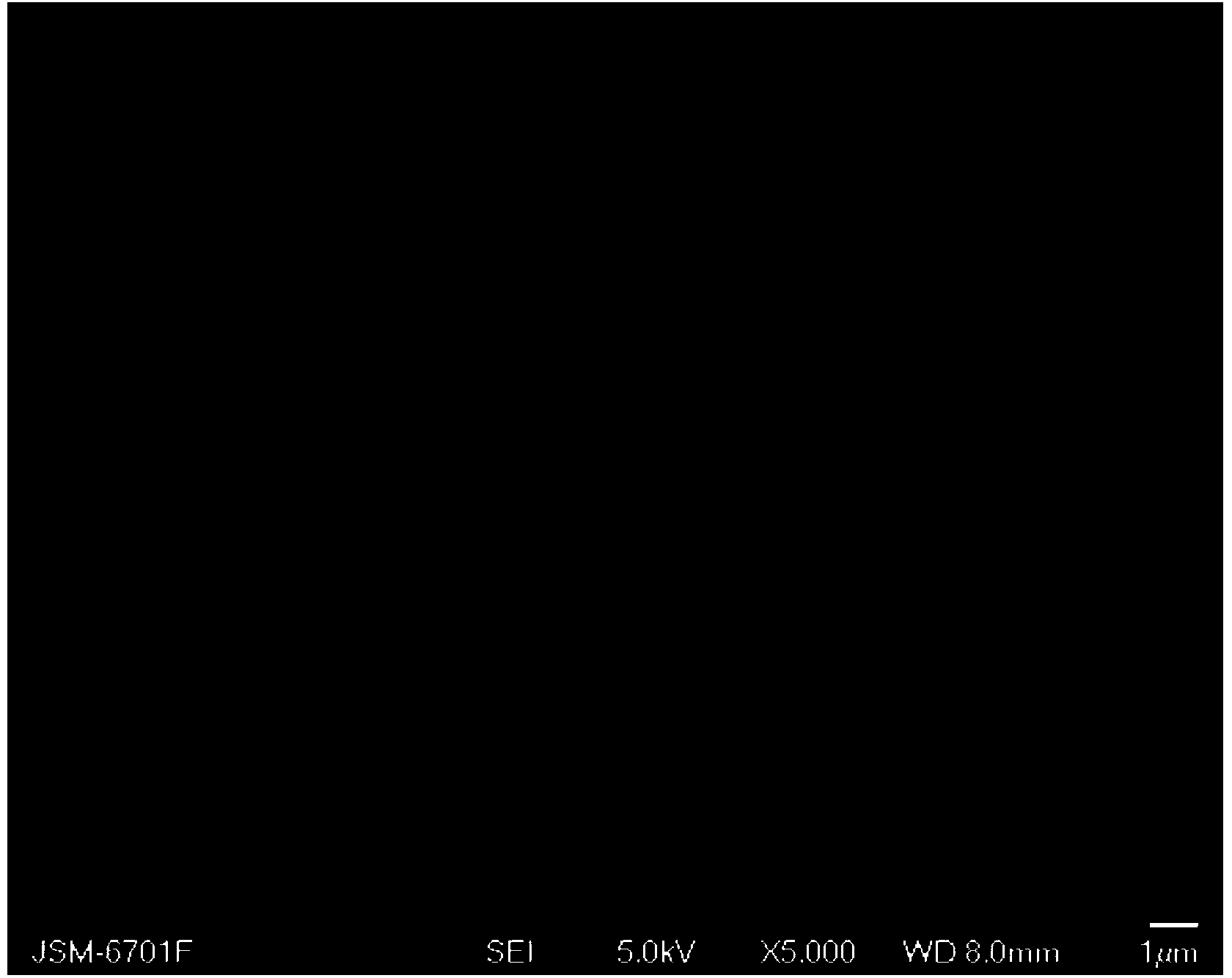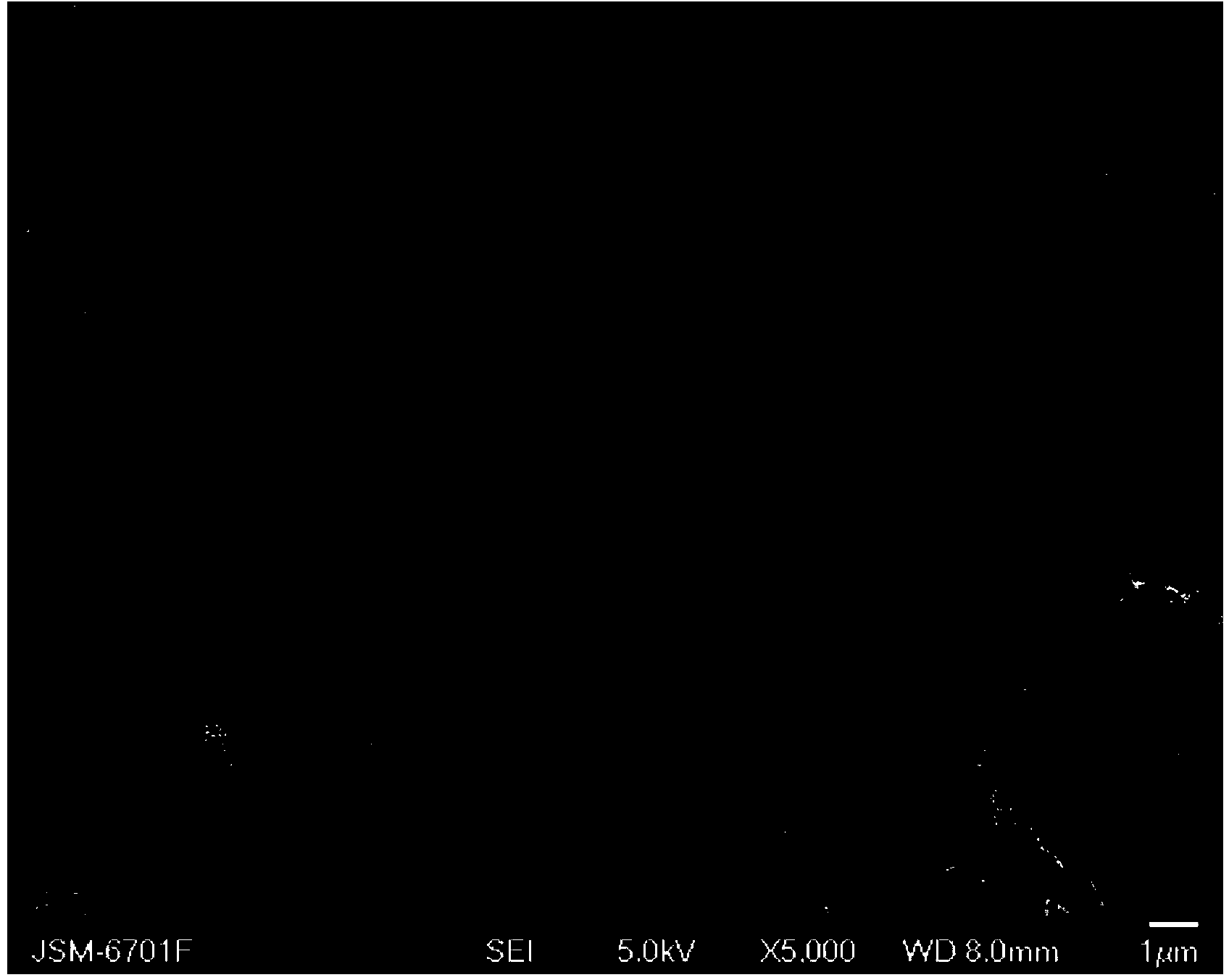Method for producing micro-nanoscale carbide ceramics by carbon coating
A carbide, micro-nano technology, applied in the fields of carbon compounds, chemical instruments and methods, inorganic chemistry, etc., can solve the problems of low production efficiency and high reaction temperature, and achieve large correlation, high reaction efficiency, and uniform and controllable scale. Effect
- Summary
- Abstract
- Description
- Claims
- Application Information
AI Technical Summary
Problems solved by technology
Method used
Image
Examples
specific Embodiment approach 1
[0020] Specific implementation mode 1: The method for producing micro-nano-scale carbide ceramics by carbon coating in this embodiment is implemented according to the following steps:
[0021] 1. Mix the oxide raw material and the resin evenly, put it into an alcohol solvent for ball milling for 2-3 hours, then put it into a rotary evaporator and dry it at 65-75°C, press and solidify to obtain the mixture;
[0022] 2. Put the mixture obtained in step 1 in a carbonization furnace, heat it to 600-700°C at a heating rate of 10-50°C per hour, and keep it warm for 1-2 hours to obtain carbon-coated oxide powder;
[0023] 3. Transfer the carbon-coated oxide powder to an operating furnace, heat it to 1100-2000°C under the protection of an inert gas, and keep it warm for 4-8 hours for solid-phase carbonization reaction to obtain carbide powder;
[0024] Four, carry out oxidation treatment to the carbide powder that step 3 obtains and remove unreacted carbon raw material, obtain the car...
specific Embodiment approach 2
[0029] Embodiment 2: The difference between this embodiment and Embodiment 1 is that the ratio of the metal oxide to the resin in the oxide raw material described in step 1 is 1 according to the molar ratio of the metal in the metal oxide to the carbon in the resin: (2.5~4.5) Mix well. Other steps and parameters are the same as those in Embodiment 1.
[0030] In this embodiment, the metal oxide is titanium oxide, tungsten oxide, aluminum oxide or tantalum oxide. When the oxide raw material is a non-metal oxide such as boron oxide, the molar ratio of the non-oxygen element in the oxide raw material to the carbon in the resin is 1: (2.5-4.5) Mix well.
specific Embodiment approach 3
[0031] Embodiment 3: This embodiment is different from Embodiment 1 or Embodiment 2 in Step 1. The particle size of the oxide raw material is 20-30 nm. Other steps and parameters are the same as those in Embodiment 1 or Embodiment 2.
PUM
| Property | Measurement | Unit |
|---|---|---|
| size | aaaaa | aaaaa |
| size | aaaaa | aaaaa |
| particle size | aaaaa | aaaaa |
Abstract
Description
Claims
Application Information
 Login to View More
Login to View More - R&D
- Intellectual Property
- Life Sciences
- Materials
- Tech Scout
- Unparalleled Data Quality
- Higher Quality Content
- 60% Fewer Hallucinations
Browse by: Latest US Patents, China's latest patents, Technical Efficacy Thesaurus, Application Domain, Technology Topic, Popular Technical Reports.
© 2025 PatSnap. All rights reserved.Legal|Privacy policy|Modern Slavery Act Transparency Statement|Sitemap|About US| Contact US: help@patsnap.com


